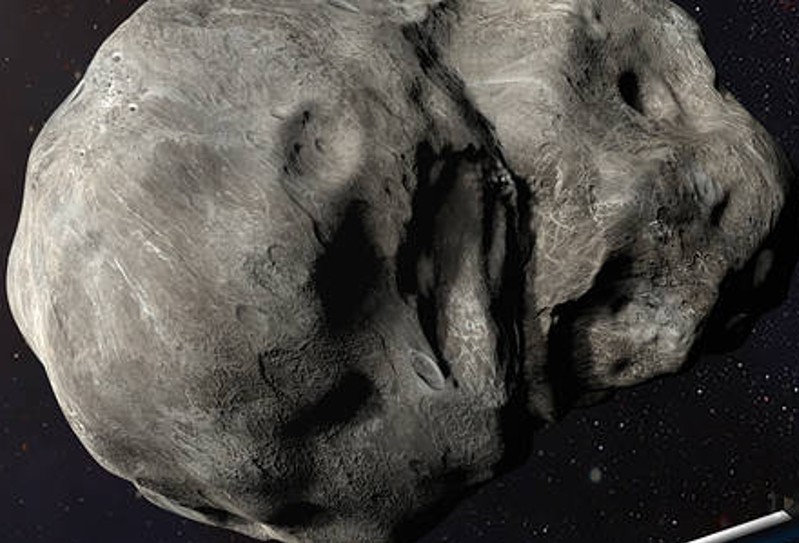
53 feet ‘potentially hazardous’ asteroid approaching Earth today; 4 more in next 4 days

A 53 feet ‘potentially hazardous’ asteroid (PHA) called 2015 FF is headed towards Earth today (August 12), according to NASA.
The asteroid is expected to come as close as 4.28 million kilometres to Earth, and NASA is attempting to reroute the Near-Earth Object (NEO), reports said on Friday.
The asteroid is as big as the size of a house, according to the National Aeronautics and Space Administration (NASA). On its website, it listed the next five asteroid approaches toward Earth.
Also read: Asteroid Day 2022: Why and how this is celebrated
After 2015 FF’s approach towards Earth on August 12, the next asteroid heading Earth’s way is 2022 OT1 (34 feet) which is as big as an aeroplane. Its closest approach would be 4.76 million kilometres, and is expected on August 13.

2015 FF has a diameter anywhere between 42 and 92 feet (13 to 28 metres) – meaning it could be the average size of a blue whale (90 feet). As 2015 FF flies past Earth, it will be travelling at a speed of 9.1 km per second or 20,512 miles per hour – roughly 30 times the speed of sound, a Daily Mail report said.
The other three asteroids (2022 OA4, 71 feet; 2022 PW, 93 feet; 2022 PJ1, 60 feet) approaching Earth are between August 14 and August 16. Two of those are of the size of aeroplanes and one as big as a house, NASA said.
On September 26, NASA said it will attempt the world’s first mission to deflect an asteroid in space. NASA’s Double Asteroid Redirection Test (DART) will demonstrate and test asteroid deflection by kinetic impactor. The spacecraft will deliberately collide with a target asteroid — which poses no threat to Earth — to change its speed and path. If successful, DART’s kinetic impact method could be used in the future if a hazardous asteroid on a collision course with Earth were ever discovered.
Also read: Earth strikes back! NASA spacecraft to smash into asteroid
Asteroid watch dashboard
NASA’s Asteroid Watch dashboard tracks asteroids and comets that will make relatively close approaches to Earth. The dashboard displays the date of closest approach, approximate object diameter, relative size and distance from Earth for each encounter.
“The dashboard displays the next five Earth approaches to within 4.6 million miles (7.5 million kilometres or 19.5 times the distance to the moon); an object larger than about 150 metres that can approach the Earth to within this distance is termed a potentially hazardous object. The average distance between Earth and the moon is about 239,000 miles (385,000 kilometres),” NASA said.
What is an asteroid?
It is a relatively small, inactive body orbiting the Sun. Asteroids are typically composed of rocky, dusty, and metallic materials. Most orbit within the main asteroid belt, between the orbits of Mars and Jupiter, but some follow paths that circulate into the inner solar system (including near-Earth asteroids), while others remain outside the orbit of Neptune, explained NASA.
Also read: Asteroid, as big as a bus, flies very close to Earth
What is a PHA?
“Potentially Hazardous Asteroids (PHAs) are currently defined based on parameters that measure the asteroid’s potential to make threatening close approaches to the Earth. Specifically, all asteroids with an Earth Minimum Orbit Intersection Distance (MOID) of 0.05 AU or less and an absolute magnitude (H) of 22.0 or less are considered PHAs. In other words, asteroids that can’t get any closer to the Earth (i.e. MOID) than 0.05 AU (roughly 7,480,000 km or 4,650,000 mi) or are smaller than about 150 m (500 ft) in diameter (i.e. H = 22.0 with assumed albedo of 13%) are not considered PHAs.
“There are currently 586 known PHAs. This “potential” to make close Earth approaches does not mean a PHA will impact the Earth. It only means there is a possibility for such a threat. By monitoring these PHAs and updating their orbits as new observations become available, we can better predict the close-approach statistics and thus their Earth-impact threat,” NASA said.
What is NEO?
“Near-Earth Objects (NEOs) are comets and asteroids that have been nudged by the gravitational attraction of nearby planets into orbits that allow them to enter the Earth’s neighbourhood. Composed mostly of water ice with embedded dust particles, comets originally formed in the cold outer planetary system while most of the rocky asteroids formed in the warmer inner solar system between the orbits of Mars and Jupiter,” NASA said.
NASA’s asteroid deflection mission
NASA’s DART, launched in 2021, is the first-ever mission dedicated to investigating and demonstrating one method of asteroid deflection by changing an asteroid’s motion in space through kinetic impact.
Also read: Mars news: Key life matter found, public help sought for cloud-spotting
This method will have DART deliberately collide with a target asteroid — which poses no threat to Earth — in order to change its speed and path. DART’s target is the binary, near-Earth asteroid system Didymos, composed of the roughly 780-meter (2,560-foot) diameter “Didymos” and the smaller, approximately 160-meter (530-foot)-size “Dimorphos,” which orbits Didymos.
DART will impact Dimorphos to change its orbit within the binary system, and the DART Investigation Team will compare the results of DART’s kinetic impact with Dimorphos to highly detailed computer simulations of kinetic impacts on asteroids. Doing so will evaluate the effectiveness of this mitigation approach and assess how best to apply it to future planetary defence scenarios, as well as how accurate the computer simulations are and how well they reflect the behaviour of a real asteroid, NASA said.


